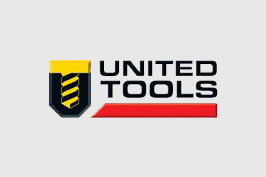Websites are remarkably complex.
Even after a massive email list or high Google rankings, a website can be far from successful if the average user spends less than 30 seconds. User time is the single biggest determinant of how successful your website will be.
The logic is pretty simple. If a user bounces back quickly, it means there is a lack of appeal on your website; be it with the content, design, or something else. Above all, it keeps your user from becoming a customer.
Your job is finding those lackings. Not just finding but rectifying them.
Worry not; we are here to help. Here’s a carefully compiled list of hacks that keep your visitors from leaving on a quick note.
It’s a win-win for everybody—your users get value, you get visitors, and the internet becomes a better place!
Let’s not waste any more time and dive into the topic
1. Fix up your web design
A user can tell if a website is worth his time in no more than 10 seconds. And almost always, design is what influences his impression.
To say the least, users take one look at your website’s design and makes several opinions about you. For example, they will judge your credibility, experience, knowledge, etc.
If a website is clunky but says they have been successful entrepreneurs for 50 years, it sure sounds shady. Doesn’t it?
Therefore, as your first stop, peruse your website design and see what needs to be done. Your design must satisfy two purposes. It should look pleasing to the eye and provide the necessary information with proper spacing.
If you can achieve this feat, your target user will be inclined to spend 30 more seconds exploring your site.
2. Design navigation should be effortless
You may have captivated your user for a few more seconds with the design, but if he struggles to navigate, everything goes down the drain. The website’s navigation should be so easy that even a child could browse it.
What we mean is that it’s all about the experience. Struggling with navigation could put your visitor off. They don’t have all the time in the world to learn about one of many websites.
You can avoid this pickle in two ways:
- One is, to begin with, basic and only essential pages. This keeps things straight and simple.
- The other way is by testing with a user and making tweaks as per their feedback. It is an excellent approach if you have a lot of pages.
3. Provide value through regular fresh content
The ways of business have changed dramatically in the last few years. Today, every small and big business captivates users through fresh content.
For instance, if you are an SEO company but your website has outdated content about old marketing resources, it will not create a favourable impression.
You might have heard this; content is the KING!
Thus, it is absolutely necessary to keep adding new content to your website and updating old content. It nurtures old users and captures new visitors.
You can also get creative with this kind of content. FYI, here are some popular ways: Blog posts, Interactive ebooks, Videos, Webinars, Infographics, Social media, Email newsletters, Repurposing old content, and more.
Find your users’ most preferred way of consuming content, and design your content plan accordingly. Given a chance, content marketing can open up new terrains for the audience.
4. Make the content more digestible
Consider this an extension to the above point because both should go hand in hand. One without the other is simply meaningless.
Many businesses make the mistake of churning out a ton of content but with less readability, ingenuity, and value for the reader. Refrain from doing so. Readability, in specific, is what a reader notices first.
Ever read a blog post that’s one big chunk without any separation? That’s exactly what you must avoid.
People rarely read content word for word. They simply scan the highlighted parts of it, and if they find it worthy, they probably read it thoroughly.
You should create digestible content with the following:
- Shorter sentences and paragraphs
- Enough line spacing
- Big enough font size
- Subheading and bulleted points (as you see now)
- Visual content such as images, infographics, and more.
- Occasional bolded words and sentences (to attract attention)
5. Work on the page speed
Page speed is another crucial aspect of your website and users’ experience. With subpar speed, it is impossible to hold users. They will be off to another website with good speed.
A website’s speed can go down due to many reasons. It could be because of large images, too many unused codes, some particular plugins, redirecting visitors too many times, etc.
Keeping these in mind, you can communicate with your digital marketing company and make sure your project is up to speed.
6. Optimising mobile viewing
Smartphones have made a lot of things easier, one of which is website browsing.
It is a significant shift where mobile viewing has far exceeded normal PC usage. People consume website content through their smartphones, no matter where they are.
If your page is not optimised for mobile devices, you may lose out on the majority of users because of technical troubles. The issues include inappropriate font size, too close touch points, or horizontal scrolling.
To avoid all these and more issues, your website must have a responsive layout that automatically fits the device it’s being viewed on.
7. Cut back on adverts
Advertisements are a prime way to monetise your web page. Because it brings in such a great flow of money, it is easy to get tempted and go overboard.
However, you should remember that credibility is more important than quick money in business. If your website has a zillion ads, your user may have questions about your credibility. This hurts the chances of a long-term business relationship.
Too many ads affect user performance on your site. You should be particularly wary of autoplay video ads. It irritates your consumers, as you are pushing too much of what they are not looking for.
8. Proper use of internal and external links
If you can use internal and external links diligently, you can keep your visitors from leaving your site so soon.
Internal links take visitors to other pages on your website, whereas external links take them to outside sites. One thing, you should use both of these links sparingly. Too many can’t be good.
Secondly, make internal links contextual, so your audience is properly guided through your website and content. External links, on the other hand, should be kept to a minimum and strategically placed. Otherwise, the user will move to that external website, reducing your average session time.
Too many links can even put a dampener on your website design. Confused about the optimum number and placement of links?
Put your own perspective into it. Ask yourself if you would be happy to have one link in every paragraph or one link per page. What’s best for your business?
9. Prompt visitors through CTAs
Sometimes your users know what they want, and other times they don’t. You can prompt them a little to find the right things on your website.
The last words on a page shouldn’t be “…we offer the best services in town.” It must have a CTA that tells them their next step, such as “Book a free demo call.”
Some CTAs to sprinkle on your web pages:
- Join our free Facebook group
- We are up to something—check out our Instagram
- Sign up for our free webinar
- Download our premium catalogue
- Subscribe for weekly health routines
- Claim your free voucher
Don’t make your CTAs too generic, though. There are many websites with the same CTAs, so people have become immune to them. Give them a personal touch to make an impression.
10. Include an exit intent popup
The cherry on top!
An exit intent popup is a window that is triggered when the user’s cursor moves to close the tab. In it, you will offer something irresistible to the user.
A time-sensitive discount offer, for example, will encourage your user to immediately come back and check out what it is.
In the same way, you can think of more ways to have them stay longer.
- Limited-time access to a premium membership group
- A freebie
- Free entry to a webinar
Sum up
There you have it!
Applying each of these tips will improve your website a bit more. However, before anything else, take a look at your Google Analytics and find your current bounce rate.
Then track the progress after the implementation of each of these ideas. This not only improves user time but also attracts new users.
Try professional SEO services if your business heavily depends on internet traffic. It has become the new norm.
We hope our tips help you. If you have used one or a few of these before, tell us your experience in the comments below. We’d love to help you more!














